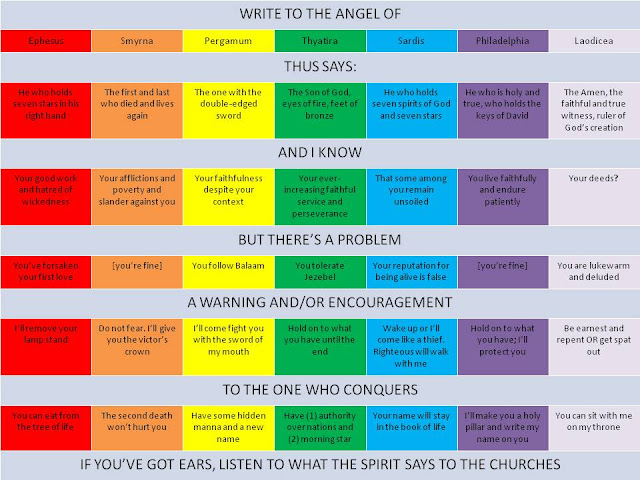In February we're going to start 20 weeks in the book of Revelation, which is getting more and more daunting the closer we get. Of course, embarking on the book is a a good thing, as we want to hit that sweet spot between ignoring Revelation to our own detriment, and reading only Revelation, also to our own detriment. That is, not reading Revelation means we miss out on the final book of the New Testament and the Bible (in its canonical order), we miss the promises and encouragements there, we miss the unique imagery and messaging used in this book alone, which will speak to some people in ways an Epistle or Gospel just won't. Similarly, reading nothing except for Revelation usually means reading Revelation through a particular lens of dispensationalism, another of those peculiarly American tack-ons to the Bible. That's usually quite dangerous, it means trying to interpret everything that happens in the world as a secret message disclosing another sign-post in the book for "whoever has ears to hear."
After the first chapter we're going to spend seven weeks looking at the seven letters to the seven churches which Jesus transcribed to John in 1:11,19. As such, 1:9-20 serves as the introduction and framework through which to read the letters. This also means a lot of the vocabulary in 1:9-20 will recur throughout the letters, which it's good to keep an eye out for.
There are lots of points of correspondence (inescapable pun) between the letters, and some of it suggests a structure, but there are more points which go against that structure that I think it's best to just read them as is, to see where there are parallels, but not get all worked up. There are seven, and seven's good and complete and so on, but that's as far as we can go.
If you look at a map, the churches are in a circuit through Asia Minor, so that if a messenger was to bring the book of Revelation from John in Patmos to the churches in Asia Minor, with its batch of personalised letters just after the introduction, they would be able to deliver it in order of the writing without too much trouble. That, to me, seems to be the sole organising principle.
The only other thing to say is that although the actual churches may have had the actual problems described, in terms of Nicolationism and persecution and so on, the "seven-ness" of the letters commends them to all people everywhere to consider how they can learn from this. It's always right to ask how we may have become like the Laodiceans or how we could be more like the Thyatirans, so long as we don't say " we're clearly the Smyrnans here and have nothing to worry about." We aren't these churches, they were and are no more, but we still need to heed the warnings where appropriate, and take encouragement where appropriate too.

No comments:
Post a Comment